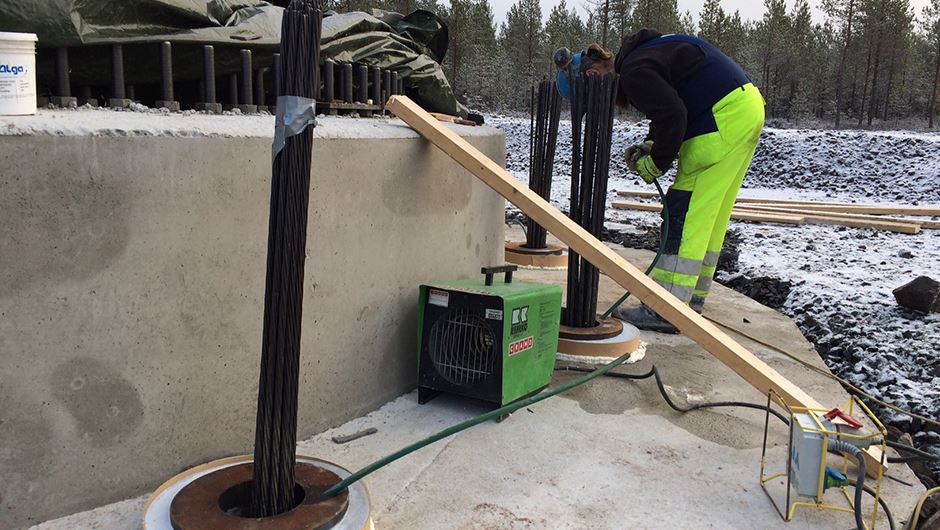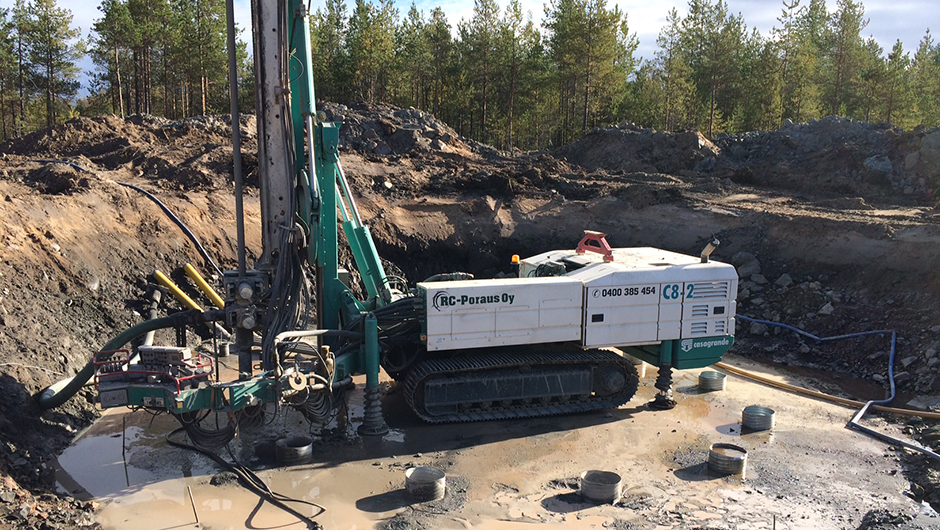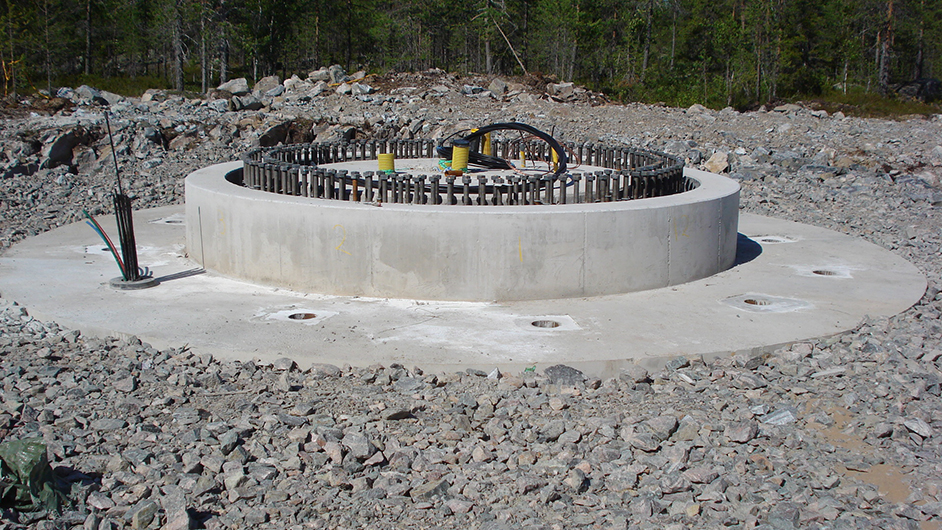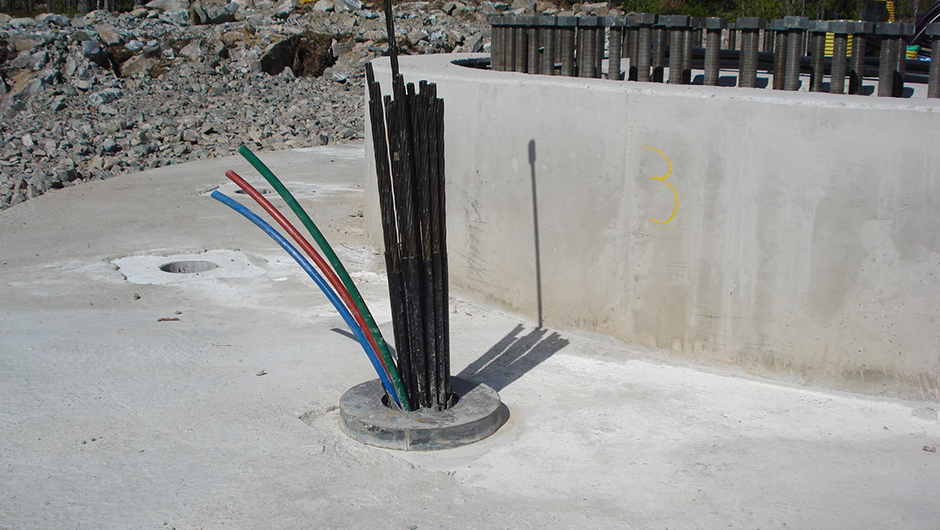Sustainable data centers as a service
Tensioning keeps the wind power plant upright
Tensioning plays a key role in anchoring huge wind turbines in the bedrock. YIT's tensioning unit’s expertise ranges from the design phase of wind power plants to implementation and, as a local operator, the agility to react to schedule changes.

In order to keep wind turbines over 100 metres high upright even in high winds, tensioning is needed to anchor the concrete foundation of the turbine to the bedrock. At YIT, these anchors have been implemented in 55 wind power plants, and 170 wind power plants have already been set up.
"We have a good understanding of the big picture and the scheduling of the implementation of the work phases, for example. We have very solid expertise in the whole tensioning process," says Mikko Toivonen, Head of YIT's post-tension unit.
In practice, anchoring means drilling a hole in the bedrock through the concrete foundation of a wind power plant. An anchor made of steel cable is installed in the hole and injected into the rock. The successful anchoring is ensured by a test tensioning, after which the anchors are tensioned to the intended force.
In terms of turbine anchoring work, YIT's largest wind farm project by far has been the Central Sweden -based Stavro wind farm.
"Of all 55 anchors made by YIT for Stavro, more than 40 are ready," says Mikko Toivonen.

Expertise from the design phase to implementation
YIT's tensioning unit offers expert services and special contracting for all sites where the construction option is tensioned structures. In wind power plants, the tensioning unit is usually involved from the design phase onwards.
"We provide a perspective as a basis for decision-making already when choosing a design solution. The earlier the tensioning unit is committed to the project, the more economical the solution reached usually is," Toivonen says.
In terms of tensioning, the delivery package can range from the delivery of individual anchors to a total delivery that includes rock drilling, as well as the delivery, installation and tensioning of anchors. During the design phase, the quality of the rock is also examined, and test anchors are carried out.
"Pre-foundation test anchors simulate reality. We use them to test the functionality of anchoring in the terrain," Toivonen says.


Near, fast, agile and safe
The tensioning unit manufactures anchors in Finland and can deliver large volumes quickly to different construction sites in the Nordic countries thanks to short distances.
"Logistically, it is easy for us to move working groups, materials, machinery and equipment from one place to another at very short notice," Toivonen says.
As a local operator, YIT has the agility to react, for example, to changes in the schedule of ground and concrete work, which can have a significant impact on the schedule of anchoring work.
"The manufacture and delivery of anchors are flexible and tailor-made for each item. It's hard to get that elsewhere," Toivonen adds.
One of the most important competitive advantages, however, is safety. Tensioning is always expert work with risks. According to Toivonen, YIT is a very safe contractor of tensioning.
"In eight years, not one of our employees of the tensioning unit has had an accident at work resulting in absence."



